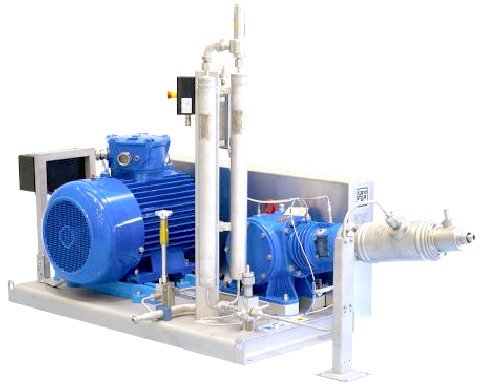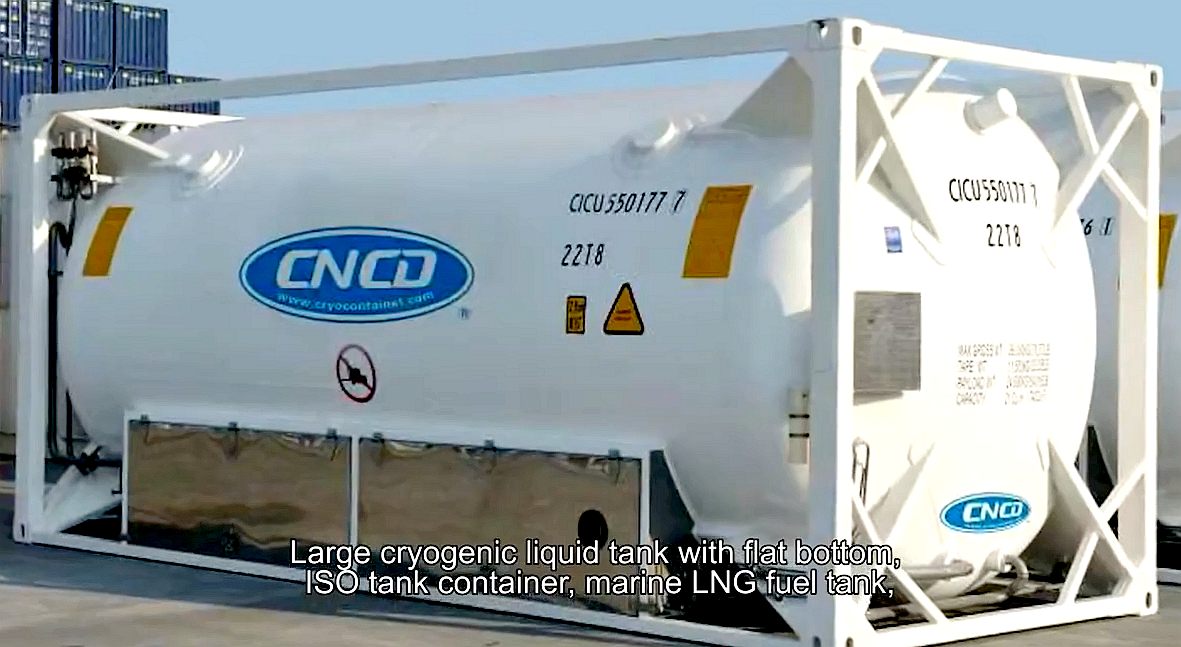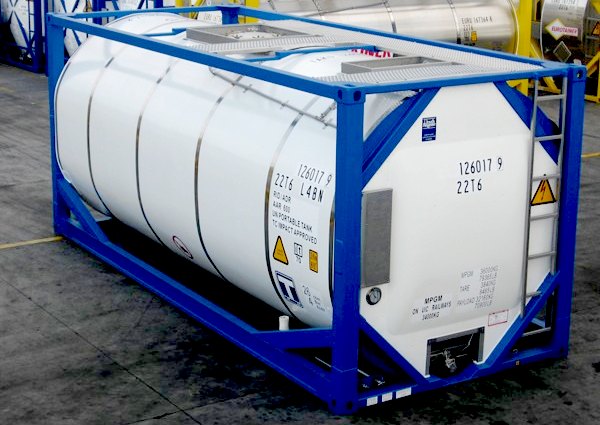|
LH2 CRYOGENICS & CLASSIFICATION
Please use our A-Z INDEX to navigate this site or return HOME
|
|
LH2 TRANSFERS - Cryostar (Zone Industrielle, 68220 Hésingue, France) has developed a range of liquid hydrogen piston pumps with large capacities and small footprints, as an ideal system for increasing the pressure of hydrogen. For example, the A-MRP 40/55-K LH2 cryo pumps are explosion proof skid mounted piston pumps designed for simple and safe installation for use with a liquid hydrogen source. Three different sizes are available, with capacities ranging from 6 to 190 kg/h with easy flow adjustment. They can be used with all types and makes of LH2 tanks and ISO containers.
A hydrogen ship is a hydrogen fueled vessel, power-assisted by an electric motor that gets its electricity from a fuel cell. Or, uses hydrogen fuel in an internal combustion engine. The internal combustion option returns roughly 30% of the energy to the propshaft, while the e-motor method returns around 50% after fuel cell conversion and motor losses. Hence, an additional 20% from the H2, or 1.66 times the IC rate. Where the e-method is compatible with solar assistance.
CLASSIFICATION
Battery electric vessels ran into a few obstacles, with ferries being unable to operate while classification certification is negotiated in sedate fashion, in spite of developer debts and mounting interest from loans. That to small start-up enterprises, represents looming insolvency, before trading might begin. As a not-for-profit such scenario cannot be entertained, hence we are looking for assistance to streamline formalities as far as may be possible, where liquid hydrogen for yachts is virgin territory.
MATERIALS SCIENCE
The design of systems for operation at cryogenic temperatures requires the use of materials with suitable properties, where, such attributes at sub-zero temperatures can be very much different than room-temperature values. Hence, we are looking for material where their mechanical properties can withstand extremes.
Data reflecting such cryogenically useful materials is not easy to find. Measurements made at the National Institute of Standards and Technology (NIST) and other laboratories around 50 years ago (though published in reports) are now out of print, making the results unavailable to most researchers.
VESSEL MASS & CRYOGENIC MATERIALS
Cryogenic cylinders are generally of stainless steel inner liners and high strength steel outers, dependable but heavy. Reduced mass cylinders have been developed by NASA for the Shuttle's external tank, principally made of Al–Li 2195 alloy. This alloy provided a significant reduction in tank weight (about 7,000 pounds or 3,175 kg) over their LWT. The Super Light Weight Tank (SLWT) provided 50% of the performance increase required for the Space Shuttle to reach the International Space Station. Hence, for our purposes, stainless steel may be our starting point, in terms of availability and trials, with aspirations of alloy weight savings, should such a platform proceed past the experimental vessel stage.
ZERO BUNKERING FACILITIES
Essentially, no regular LH2 bunker facilities exist at present, though efforts to rectify are being made by some port authorities. Each project has had to arrange for refuelling. This is a serious blocker to zero emission progress. The almost total lack of hydrogen bunkering at ports and harbours is hardly conducive to confidence in the ability of any fleet to transition, because the infrastructure is woefully under-developed. Though the technology exists to make it happen, the speed of supplies needs to be accelerated to combat global warming. We hope the newly triggered IMO clean air laws might kickstart the installation of facilities - to help commercial vessel operators meet the IMO's 2040 targets. But we fear that without government intervention, that like the shortage of service stations for automobiles, the maritime world may lag behind even further.
V2 DRAFT LH2 CRYOGENIC LAYOUT - Dependent on the mass of the LH2 tank, this general arrangement is proposed. The Swann is a greyhound, one-off special for experimental research. Not a class vessel. The weight of the vessel increases by around 25 tonnes, even with lightweight materials. Eventually, she could be a low volume tanker, or an inter-island ferry, with scale up potential.
SPACE SHUTTLE FUEL TANKS
Al–Li alloys are primarily of interest to the aerospace industry for their weight advantage. On narrow-body airliners, Arconic (formerly Alcoa) claims up to 10% weight reduction compared to composites, leading to up to 20% better fuel efficiency, at a lower cost than titanium or composites.
Aluminium–lithium alloys were first used in the wings and horizontal stabilizer of the North American A-5 Vigilante military aircraft. Other Al–Li alloys have been employed in the lower wing skins of the Airbus A380, the inner wing structure of the Airbus A350, the fuselage of the Bombardier CSeries (where the alloys make up 24% of the fuselage), the cargo floor of the Boeing 777X, and the fan blades of the Pratt & Whitney PurePower geared turbofan aircraft engine. They are also used in the fuel and oxidizer tanks in the SpaceX Falcon 9 launch vehicle, Formula One brake calipers, and the
Agusta-Westland EH101 helicopter.
STANDARD
ISO
- A 20m3 cryogenic tank, multi-layered vacuum insulation, in stainless
steel. These units are heavy. We'd not need the steel frame, where mountings
could be fabricated in alloy. A tank like this made of Weldalite 049
aluminium, can be welded conventionally. Large tanks are available from many
manufacturers concerning LNG. Not so with hydrogen, where lower temperatures
are involved.
MARINE HYDROGEN PROJECTS
2000 - The 22-person Hydra ship was demonstrated.
2003 - Duffy-Herreshoff watertaxi went into service.
2003 - Saw the debut of Yacht No. 1, and Hydroxy3000.
2004 - The AUV DeepC, and Yacht XV 1 were shown.
2005 - The Type 212 submarine, powered underwater by fuel cells, went into service with the German navy.
2006 - The 12-person Xperiance was debuted, as well as the Zebotec.
2007 - The 8-person Tuckerboot and the Canal boat Ross Barlow debuted.
2008 - The 100-passenger Zemships project Alsterwasser went into service in Hamburg.
2009 - The Nemo H2 and the Frauscher 600 Riviera HP went into service.
2013
- The Hydrogenesis Passenger Ferry project went into service. 2018 - HySeas III project: A consortium to build the world’s first sea-going car and passenger ferry fuelled by hydrogen fuel cell propulsion secured EU funding. The vessel is planned to operate in and around Orkney by 2021, which is already producing hydrogen from constrained renewable energy. The project is being led by Ferguson Marine Engineering Ltd (which is also involved in SWIFTH2) and St. Andrews University.
2018 - Jules Verne 2, hydrogen-powered passenger vessel, runs on two fuel cells of 5kW each, both equipped with electrochemical batteries powered by hydrogen. For supply, JV2 will have a hydrogen station, which will be temporarily installed in Port Boyer. Currently under construction, this hydrogen station will be fueled by the official supporter of Energy Observer, Air Liquide.
2019 - The Kawasaki New Sunshine Project was taking shape.
2020
- The car ferry MF Hydra is under construction in Norway. It uses liquid hydrogen, two 200 kW fuel cells, a 1.36 MWh battery, and two 440 kW
diesel generators. The hydrogen tanks and the fuel cell are located on top of the ferry. The hydrogen is trucked from Leipzig in Germany.
2023 - Fjord cruise ship Havilla, Havyard, NES, liquid hydrogen fuel cell & battery powered
|
|
ZEWT ALORS - The solar and wind powered 'Elizabeth Swann' will feature solar collectors and wind energy harvesting apparatus in an advanced configuration. Her hull configuration is ideal to incorporate mass hydrogen storage tanks, offering ranges of up to 4,000nm on compressed gas. This yacht could circumnavigate the globe on one fill up of liquid hydrogen, stored in two cryogenic tanks. Unfortunately, at this stage not in under 80 days, to equal the famous Jules Verne round the world record. Though, anything is possible in a world literally frying itself using fossil fuels. We'll need to see how Cop26 pans out.
|
|
A-Z
INDEX OF H2 POWERED FUEL
CELL CONCEPTS
LIQUID HYDROGEN LINKS & REFERENCE
https://cryostar-hydrogen-solutions.com/maritime-sector/ https://www.energy-observer.org/innovations/jules-verne-2-navibus-nantes-hydrogen-propulsion
|
|
Please use our A-Z INDEX to navigate this site or return HOME
This website is Copyright © 2021 Jameson Hunter Ltd
|




